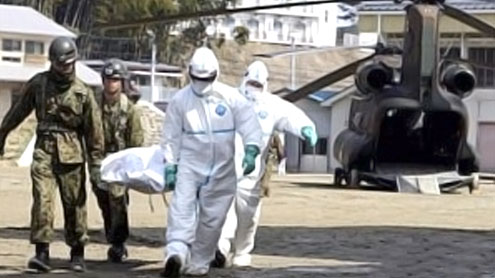 METAIRIE, La. – The 300-ton device that failed to stop the massive Gulf oil spill — considered a key piece of evidence in the investigation into the disaster — has not been analyzed a month after it was raised from the seafloor, a Coast Guard official told The Associated Press on Wednesday.The government had told a federal judge that necessary equipment would be procured and sufficient space for the blowout preventer would be constructed so the examination could begin on Oct. 1. But the analysis has yet to begin because officials are still waiting for testing procedures to be approved, U.S. Coast Guard Lt. Suzanne Kerver told the AP.The delay could prolong the work of a federal panel investigating the cause of the oil rig explosion and the spill it triggered. A multi-agency government investigative team has the final say on the testing techniques, according to court records.”It’s really important that they get those procedures vetted,” Kerver said. “They want to absolutely ensure it is done accurately and appropriately.”The device was raised from the seafloor on Sept. 4 and later taken to a NASA facility in New Orleans where officials from the space agency say it is being preserved for testing. A Justice Department spokesman declined to comment on the delay.An April 20 blast aboard the Deepwater Horizon offshore rig killed 11 workers and led to more than 200 million gallons of oil spewing from BP PLC’s undersea well. Blowout preventers are hulking devices that are designed to shut in oil in the event of an explosion or major well-control problem. In the Deepwater Horizon case, the valves would not stay closed, allowing oil to spew into the sea.The joint U.S. Coast Guard-Bureau of Energy Management, Regulation and Enforcement panel, which is also trying to find ways to improve safety, was holding hearings in New Orleans this week.
METAIRIE, La. – The 300-ton device that failed to stop the massive Gulf oil spill — considered a key piece of evidence in the investigation into the disaster — has not been analyzed a month after it was raised from the seafloor, a Coast Guard official told The Associated Press on Wednesday.The government had told a federal judge that necessary equipment would be procured and sufficient space for the blowout preventer would be constructed so the examination could begin on Oct. 1. But the analysis has yet to begin because officials are still waiting for testing procedures to be approved, U.S. Coast Guard Lt. Suzanne Kerver told the AP.The delay could prolong the work of a federal panel investigating the cause of the oil rig explosion and the spill it triggered. A multi-agency government investigative team has the final say on the testing techniques, according to court records.”It’s really important that they get those procedures vetted,” Kerver said. “They want to absolutely ensure it is done accurately and appropriately.”The device was raised from the seafloor on Sept. 4 and later taken to a NASA facility in New Orleans where officials from the space agency say it is being preserved for testing. A Justice Department spokesman declined to comment on the delay.An April 20 blast aboard the Deepwater Horizon offshore rig killed 11 workers and led to more than 200 million gallons of oil spewing from BP PLC’s undersea well. Blowout preventers are hulking devices that are designed to shut in oil in the event of an explosion or major well-control problem. In the Deepwater Horizon case, the valves would not stay closed, allowing oil to spew into the sea.The joint U.S. Coast Guard-Bureau of Energy Management, Regulation and Enforcement panel, which is also trying to find ways to improve safety, was holding hearings in New Orleans this week.
In Wednesday testimony, a BP contractor who handled logistics aboard the doomed rig was asked about a helicopter flight that took workers for oil services firm Schlumberger off the vessel hours before the explosion. Also, a BP negotiator who handles agreements involving offshore projects was asked about the cost of building the well that blew out and the relationship between BP and its partners.BP was a majority owner of the well that blew out and was leasing the rig that exploded from Transocean Ltd.BP offshore land negotiator Michael Beirne said that there are e-mails showing that minority well owners Anadarko Petroleum Corp. and MOEX 2007 LLC were provided real-time data from the rig in the days before the explosion.
The disclosure could be a factor down the road in parceling out financial liability for the disaster.BP has already spent more than $11 billion related to the cleanup and response to the spill. It also has agreed to set aside $20 billion for a victim’s compensation fund, and it faces tens of billions of dollars in fines, penalties and other potential liabilities from the disaster.
Anadarko and MOEX would be excused from paying their share of the damages if BP were deemed grossly negligent or shown to have committed willful misconduct, according to an agreement among the three parties. Absent such a finding, the partners would be responsible for a portion of the damages, depending on the amount of their culpability, according to testimony at the hearings Wednesday.
Beirne also testified that the Macondo well project was nearly $60 million over budget days before the explosion – Yahoonews











